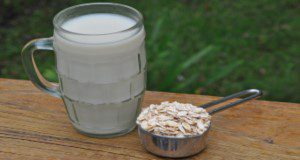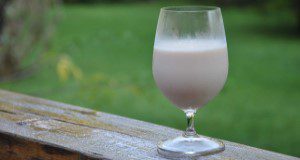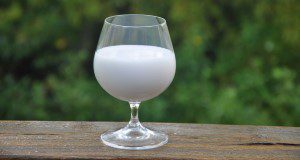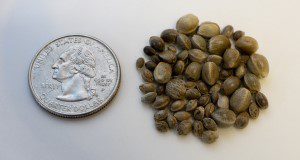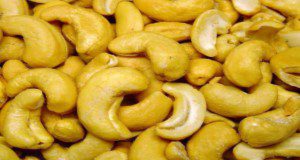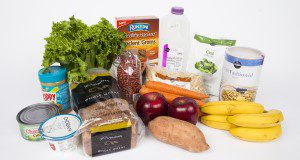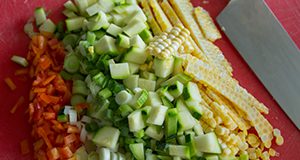La leche de arroz es una bebida no láctea a base de plantas elaborada principalmente con arroz molido y agua. Se comercializa como un sustituto vegano de la leche de vaca, fácil de digerir y apto para personas alérgicas. Al igual que otras bebidas a base de plantas, la leche de arroz generalmente tiene un color blanco opaco o beige y una textura cremosa que se asemeja a la leche de vaca. Esta publicación describe cómo se elabora la leche de arroz, sus ingredientes y perfil de nutrientes, y los posibles beneficios para la salud y riesgos del consumo.
This new 5-page publication of the UF/IFAS Food Science and Human Nutrition Department is the Spanish translation of FSHN20-50/FS412, Plant-Based Milks: Rice, written by Meagan Lamothe, Daniela Rivero-Mendoza, and Wendy J. Dahl.
https://edis.ifas.ufl.edu/fs428
Tag: Wendy J. Dahl
Leches a base de plantas: Avena
La leche de avena es una de las alternativas lácteas más recientes en llegar a los estantes de los supermercados, y actualmente hay varias marcas disponibles en los Estados Unidos. La leche de avena está hecha de avena en grano. Esta publicación describe cómo se elabora la leche de avena, sus ingredientes y perfil de nutrientes, y los posibles beneficios y riesgos para la salud del consumo.
This new 4-page publication of the UF/IFAS Food Science and Human Nutrition Department is the Spanish translation of FSHN20-52/FS419, Plant-Based Milks: Oat, written by Hannah Cooper, Daniela Rivero-Mendoza, and Wendy J. Dahl.
https://edis.ifas.ufl.edu/fs427
Leches a base de plantas: Almendras
La leche de almendras, una alternativa a la leche de origen vegetal, se produce a partir de almendras y agua. La leche de almendras tiene su origen en la región mediterránea y se consume desde hace muchos años. En los Estados Unidos, hay varias marcas comercializadas de leche de almendras. Esta publicación describe el perfil de nutrientes y los posibles beneficios y riesgos para la salud de la leche de almendras.
This new 3-page publication of the UF/IFAS Food Science and Human Nutrition Department is the Spanish version of FSHN20-48/FS410, Plant-Based Milks: Almond. Written by Elena Torna, Daniela Rivero Mendoza, and Wendy J. Dahl.
https://edis.ifas.ufl.edu/fs423
Plant-Based Milks: Soy
Soy milk is a plant-based milk made from the legume soybean. Unlike some of the recently marketed plant-based milks, soy milk has a long history as a beverage around the world and has been marketed in the United States for more than a century. If you have wondered how it compares to cow’s milk, this new 5-page publication of the UF/IFAS Food Science and Human Nutrition Department describes the composition and nutrient content of soy milk and its potential benefits and risks to health. Written by Jessica Goldberg, Daniela Rivero-Mendoza, and Wendy J. Dahl.
https://edis.ifas.ufl.edu/fs422
Leches a base de plantas: Coco
La leche de coco es una de las muchas variedades de alternativas vegetales a la leche de vaca. Los factores que pueden llevar a los consumidores hacia alternativas a la leche no láctea incluyen la adherencia a una dieta vegana, la intolerancia a la lactosa, la alergia a la leche de vaca o simplemente la preferencia. El propósito de esta guía es informarle sobre el contenido de nutrientes de la leche de coco y sus posibles beneficios y riesgos para la salud.
This new 4-page article is the Spanish language version of FSHN20-49/FS411, Plant-Based Milks: Coconut, written by Celia Andreo, Daniela Rivero-Mendoza, and Wendy J Dahl, and published by the UF/IFAS Food Science and Human Nutrition Department.
https://edis.ifas.ufl.edu/fs421
Plant-Based Milks: Hemp
Hemp milk is a plant-based milk growing in popularity. Commercial hemp seed, used in the production of hemp milk, contains only trace amounts of the compound tetrahydrocannabinol (THC), much too low to produce any psychoactive effects from consuming the milk. This new 4-page publication describes the composition of hemp milk and the potential health benefits and risks. Written by Sarah Curl, Daniela Rivero-Mendoza, and Wendy J. Dahl, and published by the UF/IFAS Food Science and Human Nutrition Department.
https://edis.ifas.ufl.edu/fs420
Plant-Based Milks: Oat
Oat milk is one of the more recent dairy alternatives to hit the grocery shelves, and several brands are currently available in the United States. Oat milk is made from the cereal grain oats. This new 3-page publication of the UF/IFAS Food Science and Human Nutrition Department describes how oat milk is made, its ingredients and nutrient profile, and the potential health benefits and risks of consumption. Written by Hannah Cooper, Daniela Rivero-Mendoza, and Wendy J. Dahl.
https://edis.ifas.ufl.edu/fs419
Leches a base de plantas: Nuez de marañón (anacardo)
La disponibilidad y el consumo de alternativas de leche a base de plantas, también conocidas como no lácteas, han ido en aumento. Las ventas de alternativas a la leche no láctea se han más que duplicado, mientras que el consumo de leche de vaca tradicional ha disminuido. Este aumento puede deberse a que las leches de origen vegetal se perciben como “naturales”, así como a un aumento del veganismo y la búsqueda de evitar la lactosa. Las principales alternativas de leche de origen vegetal son la almendra, la soja, el coco, la nuez de marañón (anacardo) y el arroz. Esta publicación analiza el contenido nutricional, los posibles beneficios para la salud y los posibles riesgos de la leche de nuez de marañón.
This new 4-page article is the Spanish translation of FSHN20-51/FS413, Plant-Based Milks: Cashew, written by Jamie Zeldman, Daniela Rivero-Mendoza, and Wendy J. Dahl, translated by Daniela Rivero-Mendoza, and published by the UF/IFAS Food Science and Human Nutrition Department.
https://edis.ifas.ufl.edu/fs418
Plant-Based Milks: Cashew
The availability and consumption of plant-based milk alternatives have been on the rise. Sales of nondairy milk alternatives have more than doubled, whereas consumption of traditional cow’s milk has dropped. This increase may be due to plant-based milks being perceived as “natural,” as well as a rise in veganism and avoidance of lactose. The primary plant-based dairy alternatives are almond, soy, coconut, cashew and rice. This new 4-page publication of the UF/IFAS Food Science and Human Nutrition Department discusses the nutritional content, potential health benefits, and potential risks of cashew milk. Written by Jamie Zeldman, Daniela Rivero-Medoza, and Wendy J. Dahl.
https://edis.ifas.ufl.edu/fs413
Plant-Based Milks: Coconut
Plant-based alternatives to cow’s milk have become a rising trend. Factors that may steer consumers toward nondairy milk alternatives include adherence to a vegan diet, lactose intolerance, allergy to cow’s milk, or simply preference. Coconut milk is one of the many varieties of plant-based milk. Whether you are considered switching to or have already begun purchasing a plant-based milk, the purpose of this new 4-page guide is to inform you on the nutrient content of coconut milk and its potential health benefits and risks. Written by Celia Andreo, Daniela Rivero-Mendoza, and Wendy J. Dahl, and published by the UF/IFAS Food Science and Human Nutrition Department.
https://edis.ifas.ufl.edu/fs411
Plant-Based Milks: Almond
Almond milk, a plant-based milk alternative, is produced from almonds and water. Almond milk originated from the Mediterranean region and has been consumed for many years. In the United States, there are several marketed brands of almond milk. This new 3-page publication of the UF/IFAS Food Science and Human Nutrition Department describes the nutrient profile and potential health benefits and risks of almond milk. Written by Elena Torna, Daniela Rivero Mendoza, and Wendy J. Dahl.
https://edis.ifas.ufl.edu/fs410
Plant-Based Milks: Rice
Rice milk is a plant-based, nondairy beverage made primarily from milled rice and water. It is marketed as an allergy-friendly, easy-to-digest, vegan substitute for cow’s milk. Similar to other plant-based beverages, rice milk usually has an opaque white or beige color and creamy texture resembling that of cow’s milk. This new 4-page publication of the UF/IFAS Food Science and Human Nutrition Department describes how rice milk is made, its ingredients and nutrient profile, and potential health benefits and risks of consumption. Written by Meagan Lamothe, Daniela Rivero-Mendoza, and Wendy J. Dahl.
https://edis.ifas.ufl.edu/fs412
Nutrition for Health and Fitness: Sugar and Other Sweeteners
This new 8-page publication of the UF/IFAS Food Science and Human Nutrition Department provides information about sugars and other sweeteners in the American diet. It describes hidden sources of added sugars in foods to help those who want to reduce sugar intake find the added sugars in their diets. The section on high-intensity sweeteners looks at the characteristics of each approved sweetener, including aspartame, sucralose, and stevia. Written by Linda Bobroff.
https://edis.ifas.ufl.edu/fs406
COAST: A Comprehensive Older-Adult Screening Tool
Nutrition risk screening is a first step to quickly identify individuals who might be malnourished or at risk of malnutrition. A malnutrition screening tool should be easy to use, quick to administer, and valid—able to correctly identify those at risk of malnutrition. The Comprehensive Older Adult Screening Tool (COAST) is a valid and practical tool to determine if community-dwelling older adults, specifically older adults of lower socioeconomic status, are at risk for malnutrition. This new 6-page publication of the UF/IFAS Food Science and Human Nutrition Department, written by Karima Alabasi, Nancy J. Gal, and Wendy J. Dahl, provides an introduction to COAST as well as the 5-question screening tool.
https://edis.ifas.ufl.edu/fs393
COAST-ES: Herramienta integral de tamizaje para adultos mayores
El tamizaje (cribado) del riesgo nutricional es un primer paso para identificar rápidamente a las personas que pueden estar desnutridas o en riesgo de desnutrición. Una herramienta de tamizaje de detección de desnutrición debe ser fácil de usar, rápida de administrar y válida para poder identificar correctamente a las personas en riesgo de desnutrición. La Herramienta Integral de Tamizaje de Adultos Mayores (COAST, por sus siglas en inglés) es una herramienta váida y práctica para determinar si los adultos mayores que viven en la comunidad están en riesgo de desnutrición.
This is the Spanish translation of FSHN20-37/FS393, COAST: A Comprehensive Older-Adult Screening Tool. Written by Karima Alabasi, Nancy J. Gal, and Wendy J. Dahl, translated by Daniela Rivero Mendoza, and published by the UF/IFAS Food Science and Human Nutrition Department.
https://edis.ifas.ufl.edu/fs396
Planificacion de comidas para la diabetes: manejo de la ingesta de carbohidratos
Mantener una ingesta constante de carbohidratos durante todo el día es un método eficaz de planificación de comidas para ayudar a mantener su objetivo de niveles de glucosa en sangre. Los alimentos que contienen carbohidratos tienen el mayor efecto sobre los niveles de glucosa en sangre en comparación con los alimentos que contienen principalmente proteínas o grasas. Los carbohidratos en los alimentos que contribuyen a la glucosa en la sangre incluyen azúcares y almidones. Los alimentos que contienen carbohidratos se dividen en grupos según su similar contenido de carbohidratos por porción. La cantidad de carbohidratos que consuma se basa en sus objetivos de tratamiento de la diabetes y la tolerancia a los carbohidratos.
This new 2-page article is the Spanish translation of FSHN20-1/FS324, Diabetes Meal Planning: Managing Your Carbohydrate Intake, written by Nancy J. Gal and Wendy J. Dahl, translated by Daniela Rivero Mendoza, and published by the UF/IFAS Food Science and Human Nutrition Department.
https://edis.ifas.ufl.edu/fs377
Planificacion de menu para adultos con diabetes
La nutrición, la actividad física y la medicación son los tres componentes principales de un plan de manejo de la diabetes. Según la Asociación Americana de Diabetes, no existe un plan específico de comidas para la diabetes. Si tiene diabetes, es importante desempeñar un papel activo en su autocontrol diario. Al trabajar con un Dietista Nutricionista Registrado (RDN), preferiblemente uno que sea un educador certificado en diabetes (CDE), puede desarrollar un plan de nutrición personalizado basado en sus objetivos de tratamiento, medicamentos y preferencias personales.
This new 2-page article is a translation of FSHN19-3/FS323, Meal Planning for Adults with Diabetes, written by Nancy J. Gal and Wendy J. Dahl, translated by Daniela Rivero Mendoza, and published by the UF/IFAS Food Science and Human Nutrition Department.
https://edis.ifas.ufl.edu/fs376
Bebidas nutricionales suplementarias: Las necesito?
Las bebidas nutricionales suplementarias a menudo se usan en hospitales y hogares de adultos para ayudar a nutrir a quienes pueden comer mal y han perdido peso debido a una enfermedad o falta de apetito. Más recientemente, las bebidas nutricionales están disponibles para la compra de los consumidores. Ejemplos de bebidas o batidos nutricionales suplementarios comunes son Ensure® y Boost®. Esta publicación explora la pregunta que muchos adultos mayores se hacen: “¿Necesito bebidas nutricionales suplementarias?”
This new 3-page publication of the UF/IFAS Food Science and Human Nutrition Department is a Spanish translation of FSHN18-12/FS315, Supplemental Nutrition Drinks: Do I Need Them? Written by Claire Marie Fassett, Nancy J. Gal, and Wendy J. Dahl, and translated by Daniela Rivero Mendoza.
https://edis.ifas.ufl.edu/fs321
Sal: ¿Debo recortar su consumo?
La sal alimentaria está compuesta de sodio y cloruro, dos minerales esenciales necesarios para una buena salud. El sodio es muy importante para nuestro cuerpo para mantener el equilibrio de líquidos, el volumen de sangre y la presión arterial. Sin embargo, muchas personas consumen más sodio en la dieta (de la sal) que lo que se necesita. La disminución de sodio en la dieta ha recibido mucha atención en los últimos años debido a la asociación del alto consumo de sodio en la dieta con hipertensión (presión arterial alta) y enfermedad cardiovascular. Esta publicación explora los efectos en la salud de la ingesta excesiva de sodio y las formas de disminuir la ingesta de este mineral.
This new 3-page publication of the UF/IFAS Food Science and Human Nutrition Department is the Spanish version of FSHN 18-9/FS312: Salt: Should I Cut Back? Written by Asmaa Fatani, Nancy J. Gal, and Wendy J. Dahl, and translated by Daniela Rivero Mendoza.
https://edis.ifas.ufl.edu/fs320
Vegetarianism and the Older Adult
Vegetarian diets have become more and more popular in recent years, but there is a common concern that such a diet may not provide the adequate amount of nutrients. This 3-page document discusses this misconception and explains the various benefits of a vegetarian diet for older adults. Written by Kelly Johnston and Wendy J. Dahl and published by the UF/IFAS Department of Food Science and Human Nutrition, January 2019.
http://edis.ifas.ufl.edu/fs317

